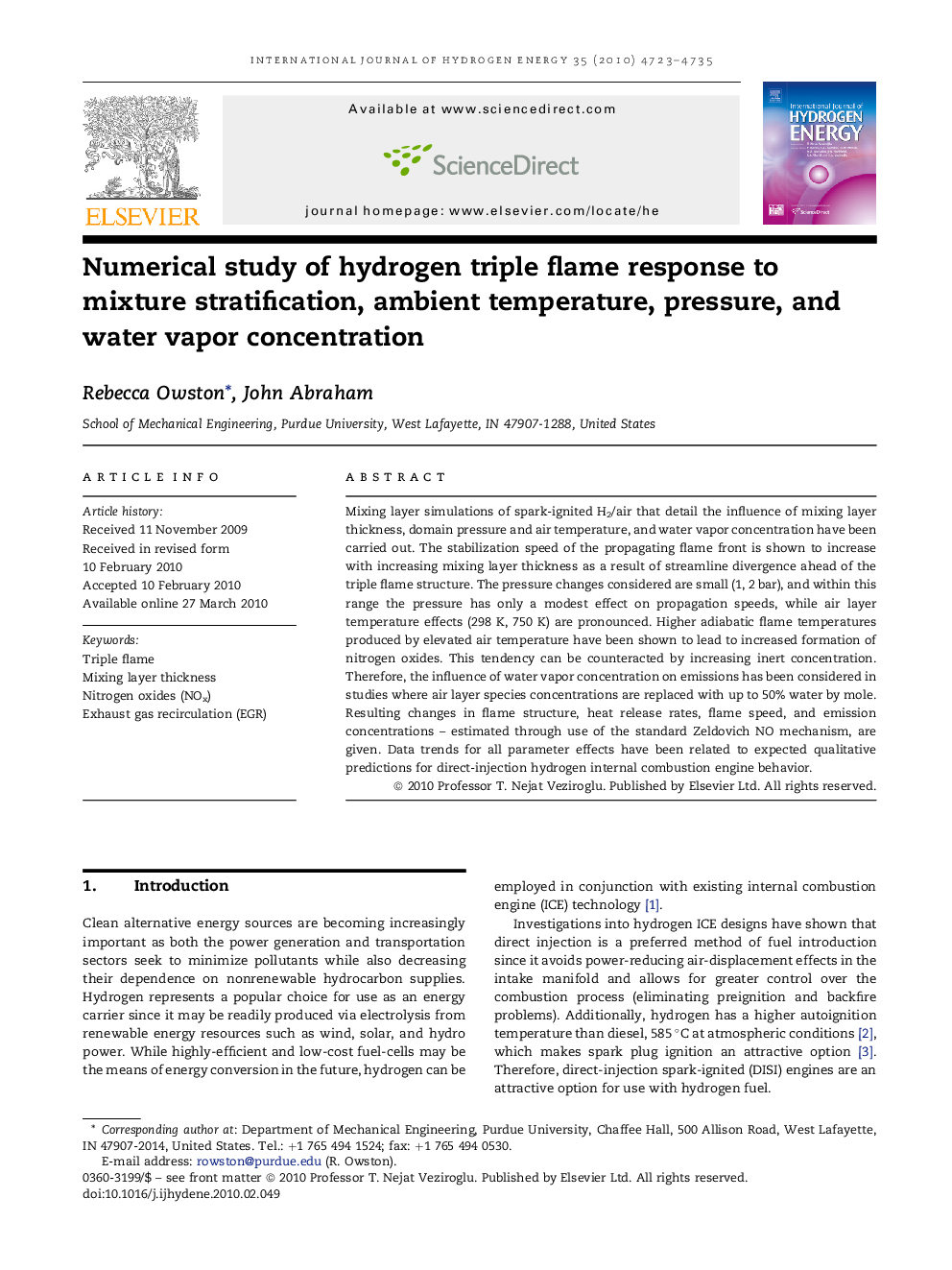| Article ID | Journal | Published Year | Pages | File Type |
|---|---|---|---|---|
| 1282818 | International Journal of Hydrogen Energy | 2010 | 13 Pages |
Mixing layer simulations of spark-ignited H2/air that detail the influence of mixing layer thickness, domain pressure and air temperature, and water vapor concentration have been carried out. The stabilization speed of the propagating flame front is shown to increase with increasing mixing layer thickness as a result of streamline divergence ahead of the triple flame structure. The pressure changes considered are small (1, 2 bar), and within this range the pressure has only a modest effect on propagation speeds, while air layer temperature effects (298 K, 750 K) are pronounced. Higher adiabatic flame temperatures produced by elevated air temperature have been shown to lead to increased formation of nitrogen oxides. This tendency can be counteracted by increasing inert concentration. Therefore, the influence of water vapor concentration on emissions has been considered in studies where air layer species concentrations are replaced with up to 50% water by mole. Resulting changes in flame structure, heat release rates, flame speed, and emission concentrations – estimated through use of the standard Zeldovich NO mechanism, are given. Data trends for all parameter effects have been related to expected qualitative predictions for direct-injection hydrogen internal combustion engine behavior.
